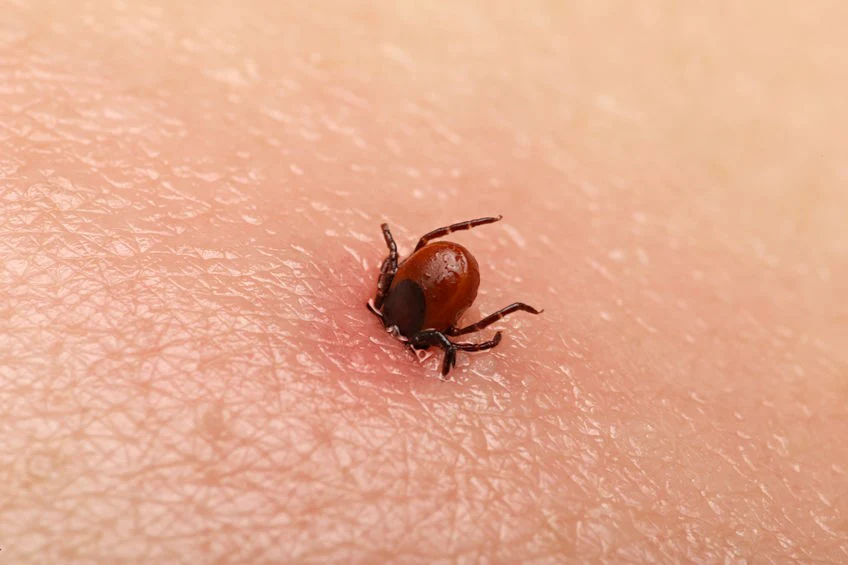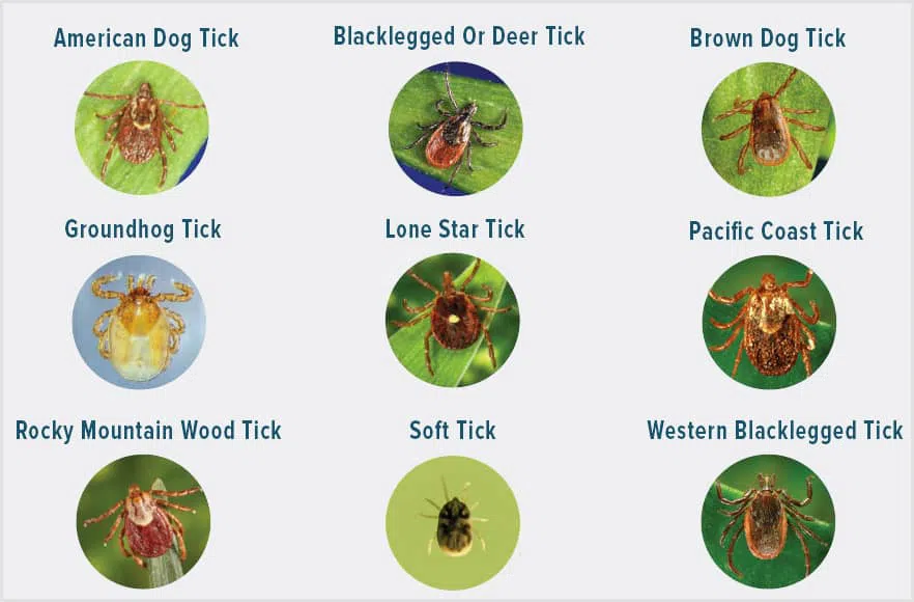Florida’s warm, subtropical climate appeals not just to residents and tourists, but also to a host of pests, particularly ticks. These tiny parasites feed on the blood of warm-blooded creatures—commonly household pets but occasionally humans—causing itchy bites and, in some cases, transmitting diseases. For property owners in Cape Coral and North Fort Myers, the environment can allow ticks to multiply rapidly if undetected. This service page explores how ticks thrive in Florida’s conditions, what signs indicate a potential tick infestation, and how a professional tick exterminator implements comprehensive tick treatments. By acting quickly, you protect loved ones, pets, and guests from the annoyance and health issues that ticks can bring.
Why Ticks Flourish in Florida

- Year-Round Warmth
In many states, frigid winters reduce tick populations by killing or stalling them. Florida’s mild winter rarely dips below freezing for extended periods, allowing ticks to remain active for most of the year. Even short cold spells fail to disrupt indoor environments that maintain moderate temperatures, providing ticks ample opportunity to feed and reproduce without a typical dormant season. - High Humidity and Moisture
Ticks require adequate moisture to develop through their larval and nymph stages. Florida’s humid air, along with rains, keeps lawns, shrubs, and shady corners damp enough for tick eggs and immature ticks to survive. Even small patches of tall grass or leaf litter hold enough moisture to shelter tick nymphs until they find a host. - Abundant Wildlife and Pets
From stray cats and raccoons to opossums, Florida’s wildlife roams suburban areas, depositing ticks in yards or near homes. Household pets—like dogs allowed outdoors—risk picking up ticks that attach to their fur. When a pet enters the house, any ticks can fall off and remain there, targeting other animals or household members. - Minimal Seasonal Downtime
In northern regions, ticks often face a forced lull in feeding or breeding during severe winter. Florida’s climate imposes minimal downtime, letting them produce multiple egg batches yearly under suitable conditions. A small number of ticks can become a significant infestation within weeks if left unchecked. - Population and Tourism Movement
Both Cape Coral and North Fort Myers experience steady inflow of visitors, new residents, and short-term rentals. Ticks can hitch rides on clothing, luggage, or secondhand furniture, spreading from property to property. Without prompt detection, they establish themselves in carpets, cracks, and yard debris, waiting for a warm-blooded host to appear.
Telltale Signs of Tick Infestations
- Pets Scratching Constantly
Unusual or persistent itching and biting by dogs or cats may signal embedded ticks. Animals may scratch at ears, neck folds, or belly. Running a flea/tick comb through fur could reveal small, dark ticks or “flea dirt,” but in the case of ticks, they are typically visible upon close inspection, clinging near skin folds. - Ticks on Floors or Walls
Certain tick species (like the brown dog tick) can live and reproduce indoors, if conditions permit. Spotting small, dark bugs—often slow-moving—on baseboards, behind doors, or climbing walls can indicate an established or growing tick issue in your home. Ticks sometimes appear near pet resting spots or corners with warm, low-traffic conditions. - Bites on Humans
Though some ticks strongly prefer animal hosts, they can bite humans if no other option appears. Tick bites typically appear as small red bumps that may form a ring or rash, depending on the species and any pathogens they carry. If repeated bites or lumps appear on ankles or lower legs after walking across a lawn, ticks may be lurking in yard grass. - Ticks in Yard Debris
Ticks often wait for hosts in shaded, moist areas—like tall grass, leaf piles, or untrimmed shrubs. Thorough yard cleaning sometimes reveals tiny clusters of tick eggs or adult ticks if the area remains consistently damp. Noticing ticks on pant legs after yard work also signals a breeding presence outdoors. - Heightened Pet Restlessness
Pets that are constantly grooming themselves, refusing certain corners of the yard, or displaying anxious behavior outside might sense ticks in the environment. Observing your pet’s unusual avoidance can tip you off to check those yard spots or corners for ticks.
Health Concerns and Why Immediate Action Helps
- Disease Transmission
Some tick species can transmit pathogens that cause illnesses like ehrlichiosis, anaplasmosis, or less commonly, Lyme disease in certain parts of Florida. While not every tick carries pathogens, consistent bites raise the potential for infection. Eliminating ticks reduces these risks for both humans and animals. - Pet Distress
Fleas already burden pets with itching; ticks compound that problem if they attach in large numbers. Pets can suffer from anemia if numerous ticks feed at once or develop tick-borne diseases. Quick removal spares them pain and possible medical bills for owners. - Household Anxiety
Finding ticks on floors, furniture, or occasionally on family members triggers anxiety. People may start avoiding certain rooms or fear letting pets roam freely. Hiring a professional tick exterminator for prompt solutions restores confidence and a sense of normal living.
Spreading Infestation
Ticks left unchecked can lay eggs in carpets, cracks, or yard debris, hatching weeks or months later. Unless a thorough approach targets every life stage, new waves of ticks may appear repeatedly, prolonging occupant discomfort and diminishing property enjoyment.

Why Professional Tick Treatments Matter
- Comprehensive Inspection
A skilled exterminator scrutinizes all interior zones—especially pet areas, floors, and nooks—as well as exterior lawns, fences, and shady yard corners for tick presence. Identifying the species (e.g., brown dog ticks, lone star ticks) pinpoints whether indoor or outdoor control is primary. - Indoor and Outdoor Solutions
Ticks frequently originate from outdoors, attaching to pets or humans crossing infested grass. Exterminators address both yard maintenance (applying insect growth regulators or larvicides around fence perimeters, trimming thick shrubbery) and indoor measures (vacuuming carpets, applying residual insecticides where ticks hide) for a holistic approach. - Pet-Veterinary Coordination
While exterminators handle environmental treatments, occupant coordination with a veterinarian ensures pets remain on monthly flea/tick preventatives. Even if your yard is cleared of ticks, unprotected animals risk re-infestation upon contact with wildlife outside. - Reduced Chemical Overuse
Instead of randomly spraying entire lawns or rooms, professionals focus insect growth regulators or adulticides precisely on tick habitats. This targeted method kills existing ticks and disrupts their reproduction, minimizing occupant or environmental impact. - Follow-Up and Assurance
Because tick eggs or pupae may survive initial applications, scheduling re-checks or ongoing yard treatments ensures newly emerged ticks face lethal conditions. Occupant vigilance plus repeated professional checks create a powerful barrier against re-infestation.
Methods Employed by a Tick Exterminator
- Vacuuming Indoors
Vacuuming picks up adult ticks, larvae, and eggs from floors, rugs, upholstered furniture, and pet bedding. Immediately discarding vacuum contents in sealed bags off-property halts re-entry. Some exterminators might also incorporate steam cleaning for thorough coverage in carpets or cushions. - Insect Growth Regulators (IGRs)
Spraying or applying IGR products to yard edges, shaded landscaping, or baseboards ensures that tick eggs or larvae cannot develop into feeding adults. This step is especially key in moist corners, potted plant areas, or shady spots near fences. - Residual Indoor Treatments
If ticks have invaded a building, a residual insecticide carefully applied in crevices, under furniture, or along baseboards ensures ticks crossing treated zones perish. The exterminator ensures occupant safety by recommending re-entry after dryness or ventilation. - Outdoor Larvicides or Granular Applications
Yards with tall grass, leaf litter, or pet runs often host tick eggs or nymphs. Sprinkling larvicides or carefully spraying the lawn perimeter kills these immature ticks. Mowing grass short and raking leaves also hamper ticks from lying low in damp corners. - Ongoing Occupant Guidance
Professionals advise owners on yard upkeep—removing brush piles, trimming shrubs away from walls, or storing pet food securely. For indoor spaces, cleaning pet bedding frequently, vacuuming, or sealing cracks near baseboards helps maintain tick-free zones.
Covering Cape Coral and North Fort Myers
Cape Coral: With a vast network of canals, sunny neighborhoods, and frequent occupant transitions, Cape Coral sees plenty of yard spaces where ticks might lurk if not routinely managed. Pets can pick up ticks near canal edges or heavily vegetated corners, inadvertently bringing them inside. Routine yard checks plus occupant diligence hamper major outbreaks.
North Fort Myers: This area blends rural pockets with suburban developments. Outdoor animals or wildlife passing through yards might leave tick eggs, or owners might track them in after yard work. Regular property sweeps, alongside occupant involvement in pet care, ensure ticks do not linger under porches or in shady yard spots.

Why Our Tick Treatments Excel
- Florida-Focused Knowledge
Because ticks remain active through Florida’s mild winters, our approach addresses continuous breeding cycles. We craft solutions tackling every life stage, from eggs in soil to adult ticks in carpets, matching southwestern Florida’s environment. - Precision and Safety
Instead of covering entire areas with chemicals, we identify prime tick hideouts—like fence lines, under decks, or pet bedding—and apply insect growth regulators or adulticides accordingly. This strategy reduces occupant exposure while effectively reaching ticks. - Coordination with Pet Care
Our exterminator solutions highlight that environmental treatments alone fail if pets remain unprotected. By encouraging monthly flea/tick preventatives from veterinarians, the synergy of pet protection plus yard care yields strong, enduring results. - Follow-Up Checks
Because eggs might hatch weeks later, scheduling re-checks ensures newly emerged ticks face lethal conditions. If occupant sightings persist, we refine treatments promptly, ensuring no partial pockets survive to reestablish the infestation.
Next Steps
Noticing pets scratching excessively, discovering ticks on clothing after yard chores, or spotting slow-moving insects on baseboards? Contact us to learn more or schedule your service. Our tick exterminator methods in Cape Coral and North Fort Myers address all life stages, both indoors and outdoors, securing your home or business against these biting pests. Prompt action halts ticks from spreading or laying eggs in corners, saving you ongoing discomfort and potential disease risks.
By employing insect growth regulators, targeted yard sprays, thorough vacuuming, and occupant collaboration on pet care, ticks lose their foothold. Freed from constant itching or worry about sudden bites, families and businesses can enjoy southwestern Florida’s mild climate, scenic outdoors, and relaxed pace without the burden of hidden pests lurking underfoot.
Maintaining a Tick-Free Lifestyle
Once ticks are removed, a few habitual changes help prevent reintroduction:
- Frequent Vacuuming: Regularly clean carpets, rugs, furniture, and corners to remove stray ticks or eggs. Dispose of vacuum bags or canisters in sealed plastic outside.
- Wash Pet Bedding: Launder items on hot cycles weekly. Dryer heat kills ticks or eggs that survive washing.
- Mow and Trim: Short grass deprives ticks of shady, humid hideouts. Removing leaf litter or brush near fence lines also helps.
- Use Pet Preventatives: Ask veterinarians about monthly flea/tick collars, topicals, or oral chewables. Well-protected dogs or cats drastically lower re-infestation odds.
- Inspect After Yard Work: Check clothing and shoes for ticks if you work in tall grass or leaf piles. Immediately removing attached ticks halts them from traveling indoors.
By merging these everyday steps with occasional yard checks and swift professional help if new ticks appear, southwestern Florida residents preserve a calm, pest-free environment. The synergy of occupant diligence and expert extermination ensures that Florida’s warm environment fosters outdoor leisure, not hidden parasites.
